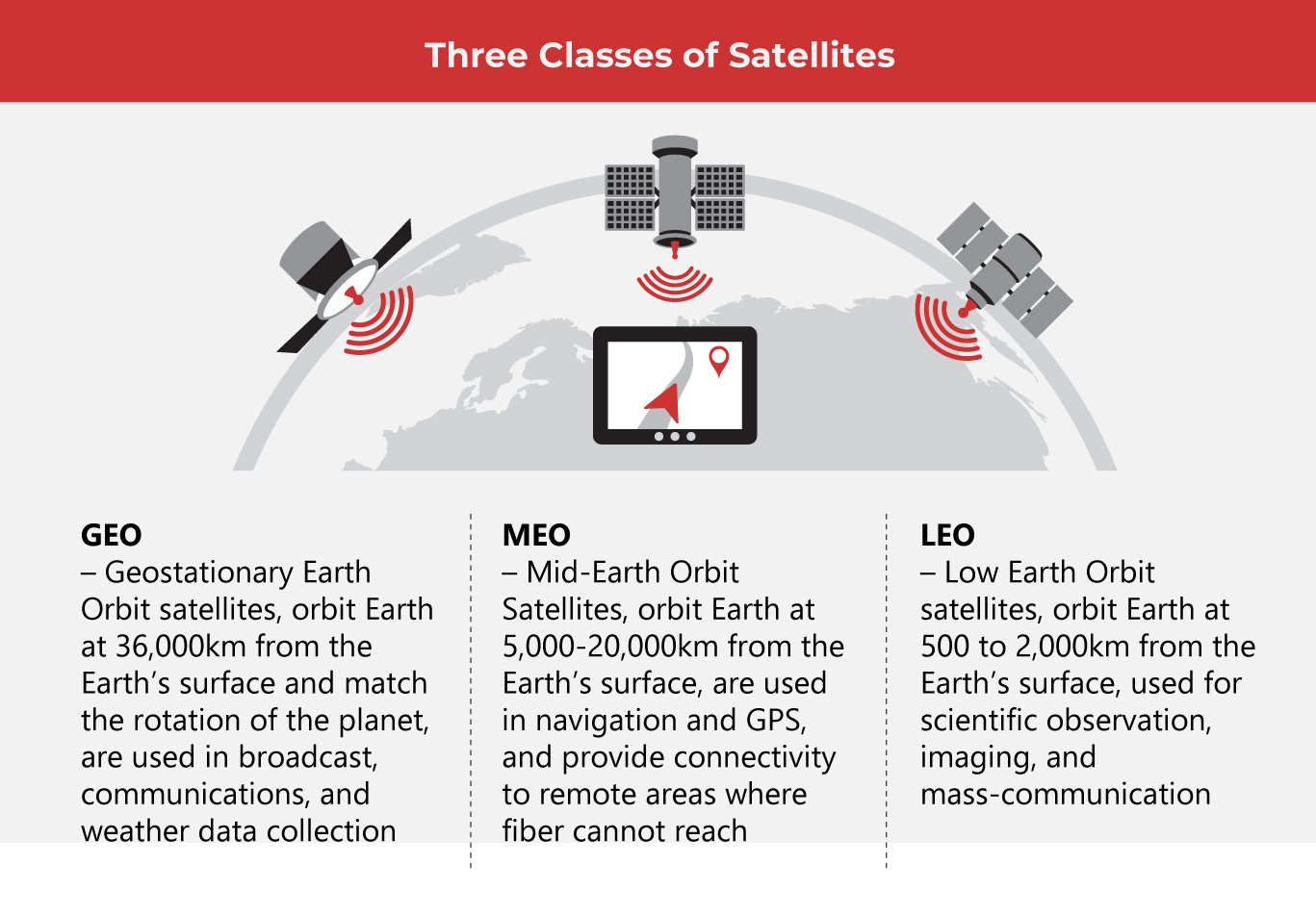What Are Low Earth Orbit Satellites?

Investments in Low Earth Orbit (LEO) satellites by governments and companies are ramping up, indicating a brand-new track in the Space Race.
In April 2023, the space tracking and analytics company, Slingshot, expanded its Global Sensor Network for better LEO space tracking. The U.S.-based company, founded in 2017 plans to make their network the largest commercial optic sensor network for LEO observation in the world, according to Electronics Weekly.
The growth means that the demand for launching LEO satellites has scaled up around the world, and more LEO satellites are being sent into space. With numerous LEO satellite constellations being formed in outer space and orbiting our planet, how do these serve life on Earth? How do we benefit?

LEO satellites orbit our planet at 500-2,000km from the Earth’s surface, and considering that GEO satellites orbit Earth at 36,000km, LEO satellites are closer than we think.
GEO satellites have been used in live simultaneous broadcasting and weather data collection for decades, and there are hundreds of these satellites in outer space. And though LEO satellites saw their beginning in the 1990s, their role only became significant when technology caught up, and the demand for internet connectivity and bandwidth skyrocketed.
Today, LEO satellites are deployed not just for science observation and imaging, but to serve remote areas where internet connectivity is scarce. In 2021, The Asian Development Bank (ADB) said that thousands of new LEO satellites are planned for Asia and the Pacific to provide connectivity for underserved areas in the region, outlining five major ways LEO satellites may impact and serve.
These include providing high-speed internet connections in remote regions; improving satellite internet quality; adding digital applications and services that were not available before; making internet connectivity rates more competitive and affordable; and improving resilience and disaster relief in areas prone to natural disasters.
“Connecting the unconnected” seems to be the overarching importance of LEO satellites. The World Economic Forum supports this sentiment by saying that the deployment of LEO satellites can bridge the digital divide.
Powerful nations are investing in LEO satellite deployment. For example, The World Economic Forum reports that the European Union (EU) has announced plans for an LEO satellite system worth six billion euros. This initiative is spurred by the EU’s desire to lessen their dependence on foreign companies, and to beef up security of their surveillance data from outsiders.
According to the World Economic Forum, “The competition is fierce as more governments and companies explore the potential of LEO satellite technology to provide high-speed internet across the world.”
LEO satellites offer plenty of opportunities for communications, business, and especially government sectors. When remote areas are provided with high-speed internet connectivity, it boosts industries such as mining, oil and gas, and forestry. Emergency and disaster response are improved, which means there is more room for agencies to respond even before the disaster hits, saving thousands of lives.
What makes LEO satellites ideal for communication is their low altitude. Because of this, communication signals between satellites do not require much power, and data travels much faster. According to Dragonfly Aerospace, LEO satellites are easier to build and are more affordable to construct compared to GEO satellites.
However, LEO satellites come with challenges and pose concerns.
Because of their low orbit, the surface coverage of each satellite is limited. Therefore, thousands of LEO satellites need to be launched to build a constellation for transmitting data between satellites to serve specific regions.
One concern this raises is the issue of space debris. Would there be a time when there simply will be too many LEO satellites orbiting Earth? How will these satellites be regulated and which entities get a stake in outer space real estate?
Space traffic and space pollution are two big issues concerning launching LEO satellites. Another concern is light pollution here on Earth. Because outer space is getting crowded from all these satellites being launched, astronomers have raised the concern that space debris leads to obstruction of views of the night sky.
Providing high-quality internet connectivity and closing digital gaps are noble objectives, but it is also very easy to misuse the technology behind LEO satellites. Personal privacy and data security are concerns that are very much rooted down to Earth, impacting everyone with an internet connection.
Opportunities always come hand-in-hand with responsibility. With nations and companies invested in launching LEO satellites into outer space, transparency and accountability should be required. The infrastructure that supports LEO satellite technology must also be supportive of ensuring trust from potentially thousands of those who benefit from their service.
(Also read: Galactic Garbage: Debris Lost in Space)
As one of the Top 19 EMS companies in the world, IMI has over 40 years of experience in providing electronics manufacturing and technology solutions.
We are ready to support your business on a global scale.
Our proven technical expertise, worldwide reach, and vast experience in high-growth and emerging markets make us the ideal global manufacturing solutions partner.
Let's work together to build our future today.
Other Blog




